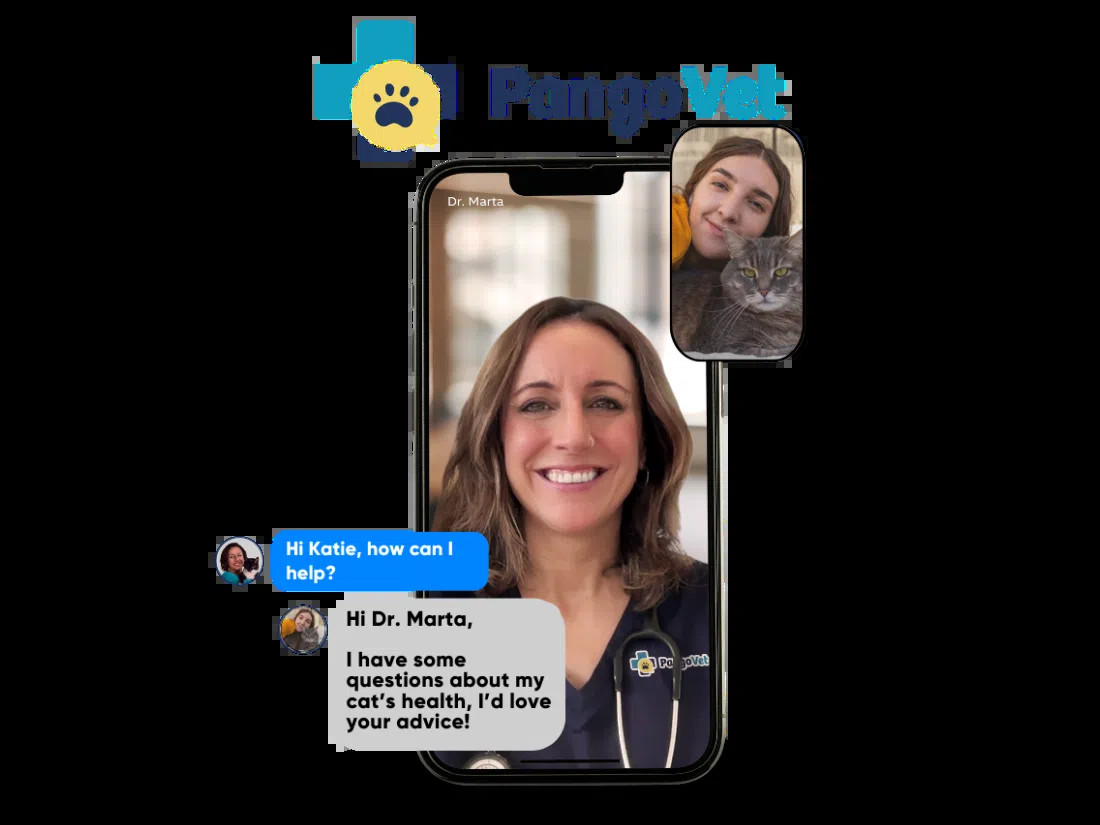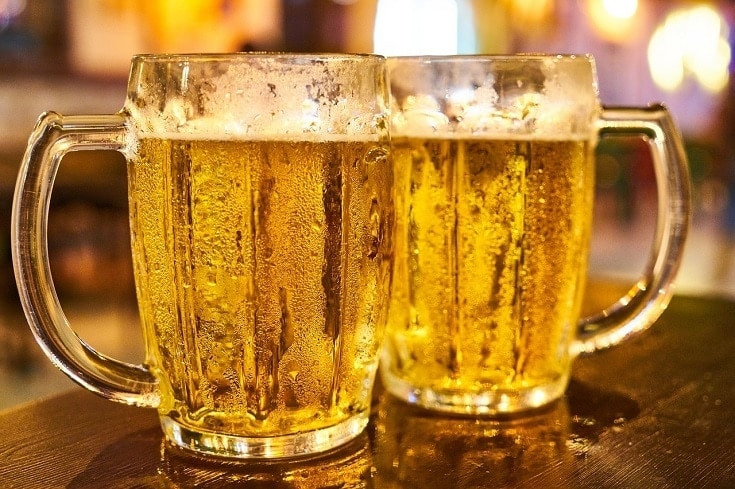Wine might be a delightful treat for humans, but Can Cats Drink Wine? No, absolutely not. Alcohol is highly toxic to cats, and even a small amount can lead to severe health problems. To keep your feline friend safe, solcat.net offers comprehensive information about the dangers of alcohol consumption for cats, recognizing the signs of toxicity, and exploring safe alternatives for shared enjoyment with your pet. Discover valuable insights on feline health and wellness, ensuring a happy and safe environment for your beloved cat.
1. Understanding the Dangers: Cats & Alcohol
Why is alcohol so harmful to cats? Let’s delve into the specifics.
1.1. Alcohol’s Toxic Effects on Cats
Alcohol is toxic to cats because their bodies process it much more slowly than humans. Their smaller size amplifies the effects, making even a tiny amount dangerous. According to the American Animal Hospital Association (AAHA), alcohol can cause significant damage to a cat’s liver and brain.
1.2. How Much Alcohol Is Too Much?
Even a small amount of alcohol can be harmful. A tablespoon of wine could be dangerous for a small cat. The Pet Poison Helpline notes that signs of toxicity can appear quickly and escalate rapidly.
1.3. Initial Symptoms to Watch For
What should you look for if your cat accidentally ingests alcohol? Early signs include:
- Disorientation: Confusion and lack of awareness.
- Lethargy: Extreme tiredness or lack of energy.
- Vomiting: Expelling stomach contents.
- Increased Urination: Frequent trips to the litter box.
- Increased Water Intake: Drinking more water than usual.
1.4. Severe Symptoms Requiring Immediate Vet Attention
If your cat displays any of these severe symptoms, seek veterinary care immediately:
- Seizures: Uncontrolled muscle spasms.
- Muscle Tremors: Shaking or trembling.
- Difficulty Breathing: Labored or shallow breaths.
- Loss of Consciousness: Fainting or unresponsiveness.
- Paralysis: Inability to move.
1.5. Why Immediate Action Is Crucial
Prompt veterinary intervention is vital. According to research from the Cornell Feline Health Center, rapid treatment significantly increases the chances of recovery. The vet may induce vomiting, administer intravenous fluids, and provide supportive care.
 Cat looking curious
Cat looking curious
Alt text: A concerned veterinarian holds a cat, emphasizing the need for immediate veterinary care if a cat shows signs of alcohol poisoning.
2. Can Cats Drink Wine? A Closer Look
Let’s focus specifically on wine and its dangers for cats.
2.1. Why Wine Is a Concern for Cat Owners
Wine, with its varying alcohol content (typically 5.5% to 25%), poses a significant risk. A cat’s small size and sensitivity to alcohol mean even a few sips can lead to toxicity.
2.2. The Varying Alcohol Content in Different Wines
Wines range in alcohol content. Lighter wines like Moscato have lower alcohol levels, while fortified wines like Port have higher levels. The higher the alcohol content, the greater the risk to your cat.
2.3. What to Do If Your Cat Drinks Wine
If you suspect your cat has ingested wine, time is of the essence.
- Contact Your Veterinarian Immediately: Don’t wait for symptoms to worsen.
- Provide Information: Tell the vet how much wine your cat consumed and the wine’s alcohol percentage, if known.
- Follow Vet’s Instructions: Be prepared to take your cat to the clinic for treatment.
2.4. Online Vet Consultation: A Quick Solution
Need immediate advice but can’t reach a vet in person? PangoVet offers online veterinary consultations, providing personalized advice and quick solutions for your pet’s health concerns.
 Hi , how can I help (5) pangovet
Hi , how can I help (5) pangovet
3. How Wine Affects Cats: The Intoxication Process
What exactly happens when a cat consumes wine? Let’s examine the effects on their system.
3.1. The Rapid Absorption of Alcohol in Cats
Cats absorb alcohol quickly into their bloodstream. This rapid absorption leads to a swift onset of symptoms.
3.2. Impact on the Nervous System
Alcohol primarily affects the central nervous system, leading to:
- Loss of Coordination: Difficulty walking or standing.
- Slowed Reflexes: Reduced response to stimuli.
- Impaired Cognitive Function: Confusion and disorientation.
3.3. Effects on the Liver and Other Organs
The liver works to metabolize alcohol, but in cats, this process is slow and inefficient. This can lead to liver damage and other organ dysfunction.
3.4. Dehydration and Electrolyte Imbalance
Alcohol can cause dehydration as it inhibits the release of vasopressin, a hormone that helps regulate fluid balance. This leads to increased urination and electrolyte imbalances.
3.5. Potential for Coma and Death
In severe cases, alcohol toxicity can lead to coma and death due to respiratory failure or severe organ damage.
4. Beyond Wine: Other Dangerous Alcohols
Wine isn’t the only alcoholic beverage that’s dangerous. Let’s look at other sources of alcohol that can harm your cat.
4.1. Beer and Its Risks
Beer, while having a lower alcohol content than wine, is still dangerous. Even a small amount can cause toxicity.
4.2. Hard Liquor: The Most Potent Threat
Hard liquors like vodka, whiskey, and gin have high alcohol concentrations. These are particularly dangerous for cats and should be kept far out of reach.
4.3. Alcohol-Based Foods: Hidden Dangers
Alcohol can hide in unexpected places, such as:
- Rum Cakes: These desserts can contain significant amounts of alcohol.
- Alcohol-Based Sauces: Some sauces may contain wine or other liquors.
- Vanilla Extract: Pure vanilla extract contains a high percentage of alcohol.
4.4. Household Products Containing Alcohol
Many household products contain alcohol, including:
- Mouthwash: Can contain up to 27% alcohol.
- Hand Sanitizer: Often contains 60-95% alcohol.
- Cleaning Products: Some may contain alcohol as a solvent.
4.5. The Danger of Raw Dough
Raw dough containing yeast is particularly dangerous. The yeast ferments, producing alcohol in the cat’s stomach, leading to alcohol toxicity.
 Beer mugs
Beer mugs
Alt text: Close-up of beer mugs, illustrating the potential danger of alcoholic beverages to cats and the importance of keeping them out of reach.
5. Identifying Alcohol Sources: Where Cats Find Alcohol
How do cats typically encounter alcohol? Let’s explore common scenarios.
5.1. Unattended Drinks: A Common Scenario
Leaving unattended drinks within reach is a common way cats ingest alcohol. Curious cats may be tempted to sample unattended beverages.
5.2. Spills and Leaks: Overlooked Hazards
Spills and leaks of alcoholic beverages can create overlooked hazards. Cats may lick up spilled liquids, unaware of the danger.
5.3. Improperly Stored Products
Improperly stored products like mouthwash or hand sanitizer can be easily accessed by cats. Secure storage is essential to prevent accidental ingestion.
5.4. Cats’ Attraction to Sweet or Creamy Drinks
Cats may be attracted to sweet or creamy alcoholic drinks, such as cocktails or liqueurs. The sweet taste can mask the alcohol, making it appealing to cats.
5.5. The Importance of Secure Storage
Securely storing all alcoholic beverages and products is crucial to protect your cat. Keep them in closed cabinets or containers that cats cannot access.
6. Immediate Steps: What to Do If Your Cat Drinks Alcohol
If your cat has ingested alcohol, take these immediate steps.
6.1. Assess the Situation: How Much Did Your Cat Drink?
Determine how much alcohol your cat ingested. This information will help the vet assess the severity of the situation.
6.2. Contact Your Veterinarian or Pet Poison Helpline
Call your veterinarian or the Pet Poison Helpline immediately. They can provide guidance and recommend appropriate treatment.
- Pet Poison Helpline: (855) 764-7661
6.3. Do Not Induce Vomiting Unless Instructed
Do not induce vomiting unless instructed by a veterinarian or the Pet Poison Helpline. In some cases, inducing vomiting can cause further harm.
6.4. Prepare to Transport Your Cat to the Vet
Be prepared to transport your cat to the vet clinic. Bring any information about the type and amount of alcohol ingested.
6.5. Stay Calm and Follow Veterinary Advice
Stay calm and follow the advice of your veterinarian. Prompt and appropriate treatment can significantly improve your cat’s chances of recovery.
7. Veterinary Treatment: How Vets Handle Alcohol Toxicity
What treatments do veterinarians use for alcohol toxicity in cats?
7.1. Inducing Vomiting to Remove Alcohol
If caught early, the vet may induce vomiting to remove alcohol from the cat’s stomach.
7.2. Activated Charcoal to Absorb Toxins
Activated charcoal can be administered to absorb any remaining alcohol in the digestive system.
7.3. Intravenous Fluids for Hydration and Support
Intravenous fluids help to hydrate the cat, maintain electrolyte balance, and support organ function.
7.4. Monitoring Vital Signs and Providing Supportive Care
The vet will monitor vital signs such as heart rate, breathing, and body temperature. Supportive care may include oxygen therapy or medications to control seizures.
7.5. Potential Need for Hospitalization
In severe cases, hospitalization may be necessary for continuous monitoring and intensive care.
8. Preventing Alcohol Exposure: Tips for Cat Owners
Prevention is key to protecting your cat from alcohol toxicity.
8.1. Store Alcohol in Secure Cabinets
Keep all alcoholic beverages and products in secure cabinets or containers that cats cannot access.
8.2. Clean Up Spills Immediately
Clean up any spills of alcoholic beverages immediately to prevent cats from licking them up.
8.3. Avoid Leaving Drinks Unattended
Avoid leaving drinks unattended, especially if your cat is curious or prone to exploring.
8.4. Be Cautious with Alcohol-Based Products
Be cautious with alcohol-based products such as mouthwash and hand sanitizer. Store them securely and use them in areas inaccessible to cats.
8.5. Educate Guests About the Risks
Educate guests about the risks of alcohol to cats. Ask them to be mindful of their drinks and to avoid leaving them within reach of your cat.
9. Safe Alternatives: Sharing the Fun with Your Cat
How can you include your cat in your relaxation routine without risking their health?
9.1. Cat Wines: A Safe and Fun Treat
Cat wines are specially formulated drinks made with ingredients like catnip, salmon oil, and filtered water. They contain no alcohol and are safe for cats.
9.2. Homemade Cat-Friendly Drinks
You can create homemade cat-friendly drinks using ingredients like:
- Chicken or Fish Broth: Unsalted and free of onions or garlic.
- Catnip Tea: Brewed with catnip and cooled.
- Water with a Splash of Tuna Juice: A tasty and hydrating treat.
9.3. Creative Ways to Serve Drinks
Serve cat-friendly drinks in fun and engaging ways:
- Small Bowls: Use small, shallow bowls that are easy for cats to drink from.
- Pet Fountains: A flowing water fountain can encourage hydration.
- Ice Cubes: Freeze cat-friendly liquids into ice cubes for a refreshing treat.
9.4. The Benefits of Bonding Over a Treat
Sharing a special treat with your cat can strengthen your bond and create positive associations.
9.5. Consulting Your Veterinarian Before Introducing New Treats
Always consult your veterinarian before introducing new treats or drinks to your cat’s diet.
10. Real-Life Scenarios: Stories and Expert Advice
Let’s explore real-life scenarios and gain expert advice on handling alcohol-related incidents with cats.
10.1. Scenario 1: Accidental Ingestion at a Party
- Story: A cat named Whiskers accidentally lapped up spilled wine during a party.
- Expert Advice: “Act quickly. The faster you respond, the better the outcome. Contact your vet immediately and provide as much information as possible,” advises Dr. Emily Carter, a veterinarian at the Seattle Animal Hospital.
10.2. Scenario 2: Curiosity with Household Products
- Story: A cat named Shadow ingested mouthwash containing alcohol.
- Expert Advice: “Household products are often overlooked. Always store them securely and be aware of the ingredients. If ingestion occurs, seek immediate veterinary care,” says Dr. Carter.
10.3. Scenario 3: Yeast Dough Mishap
- Story: A cat named Mittens ate raw yeast dough.
- Expert Advice: “Raw dough is a hidden danger. The fermenting yeast produces alcohol in the stomach, leading to toxicity. Immediate veterinary attention is crucial,” explains Dr. Carter.
10.4. General Recommendations from Veterinarians
- Prevention is Key: Store alcohol securely and be vigilant.
- Know the Signs: Recognize the early symptoms of alcohol toxicity.
- Act Quickly: Prompt veterinary intervention can save your cat’s life.
- Consult Professionals: Always seek advice from a qualified veterinarian.
FAQ: Can Cats Drink Wine?
1. Is any amount of wine safe for cats?
No, even a small amount of wine can be toxic to cats due to their small size and sensitivity to alcohol.
2. What are the early signs of alcohol poisoning in cats?
Early signs include disorientation, lethargy, vomiting, increased urination, and increased water intake.
3. What should I do if I suspect my cat drank wine?
Contact your veterinarian or the Pet Poison Helpline immediately and follow their instructions. Do not induce vomiting unless instructed by a professional.
4. Can cats recover from alcohol poisoning?
Yes, with prompt and appropriate veterinary treatment, cats can recover from alcohol poisoning.
5. What does veterinary treatment for alcohol poisoning involve?
Treatment may include inducing vomiting, administering activated charcoal, providing intravenous fluids, and monitoring vital signs.
6. Are there safe alternatives to wine for cats?
Yes, cat wines made with ingredients like catnip and salmon oil are safe alternatives. Homemade options like chicken broth or catnip tea can also be offered.
7. How can I prevent my cat from accessing alcohol?
Store alcohol in secure cabinets, clean up spills immediately, avoid leaving drinks unattended, and be cautious with alcohol-based products.
8. Is beer as dangerous as wine for cats?
While beer generally has a lower alcohol content, it is still dangerous for cats and should be avoided.
9. What household products contain alcohol that could harm my cat?
Mouthwash, hand sanitizer, and some cleaning products may contain alcohol and should be stored securely.
10. Can cats get alcohol poisoning from raw dough?
Yes, raw dough containing yeast can produce alcohol in the cat’s stomach, leading to alcohol poisoning.
At solcat.net, we’re committed to providing you with the most up-to-date and reliable information to ensure your cat’s health and happiness. Remember, a safe and informed pet owner is the best kind of pet owner. Visit solcat.net for more insights, tips, and resources to enrich your feline friend’s life!

